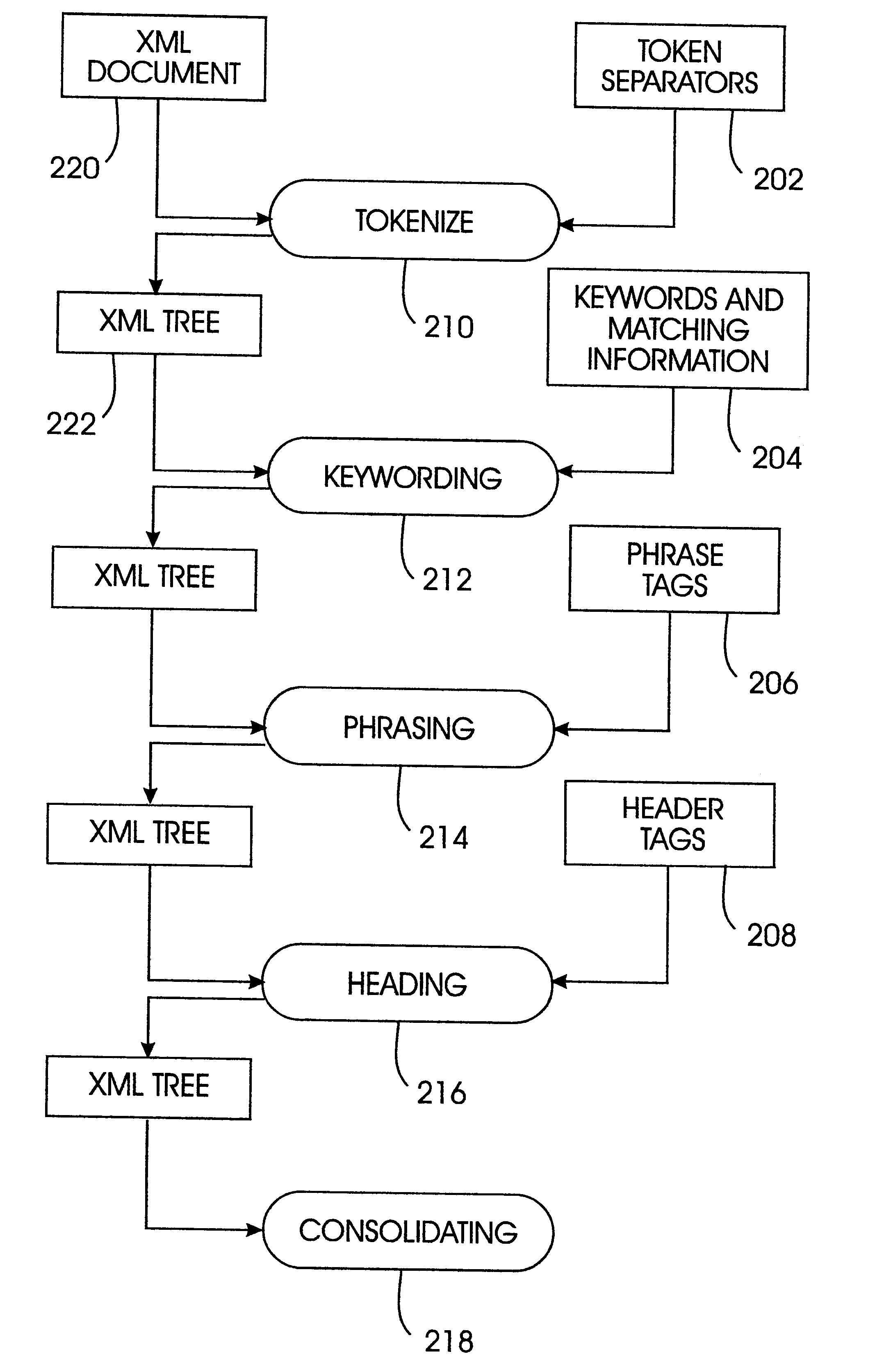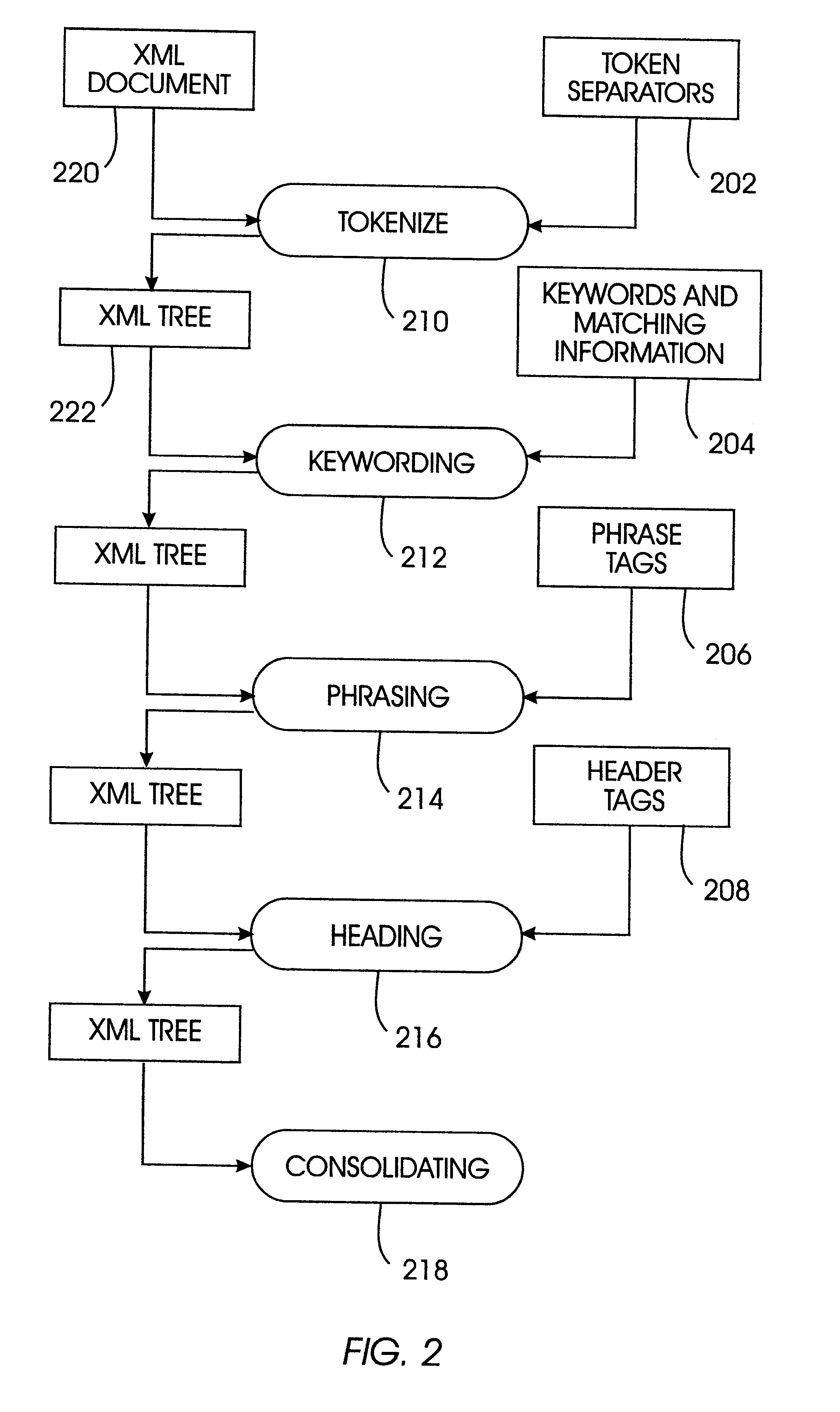System and method for discovering schematic structure in hypertext documents
a schematic structure and hypertext technology, applied in the field of document processing, can solve the problems of not considering the schematic structure of individual documents or documents, unrelated or difficult to extract, and large difficulties for automatic programs which try to extract pertinent information
- Summary
- Abstract
- Description
- Claims
- Application Information
AI Technical Summary
Problems solved by technology
Method used
Image
Examples
case ii
A.
This is similar to Case I.
Case III: F=.PHI.
In .PHI.(T(node)), a child p.sub.i of node is either labeled with a phrase tag or its next sibling is labeled with the same phrase tag. Hence, in computing .PHI.(.PHI.(T(node))), T.sup.1 (p.sub.i)=T(p.sub.i). The tree structure of T(node) is unchanged.
Case IV:F=.PSI.
This is similar to Case III.
Case V: F=.DELTA.
.DELTA. reorders the tree by replacing all non keyword nodes (except the root) by keyword nodes. Hence in .DELTA.(T(node) all nodes except the root are keyword nodes. Applying .DELTA. to .DELTA.(T(node) does not have any effect on the tree.
Empirical Results
Experiment Environment
We implement the heuristics by combining them into two passes, one top down tree traversal for tokenization, keywording, phrasing and heading, one bottom up tree traversal for consolidation.
Domain knowledge specifies the following annotation of hypertext markup tags:
PUM
 Login to View More
Login to View More Abstract
Description
Claims
Application Information
 Login to View More
Login to View More - R&D
- Intellectual Property
- Life Sciences
- Materials
- Tech Scout
- Unparalleled Data Quality
- Higher Quality Content
- 60% Fewer Hallucinations
Browse by: Latest US Patents, China's latest patents, Technical Efficacy Thesaurus, Application Domain, Technology Topic, Popular Technical Reports.
© 2025 PatSnap. All rights reserved.Legal|Privacy policy|Modern Slavery Act Transparency Statement|Sitemap|About US| Contact US: help@patsnap.com



